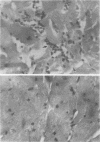Abstract
Delayed hypersensitivity and myocarditis were induced in five baboons (Papio papio) after inoculation with myocarditic murine coxsackievirus B3 (CVB3m). By means of the [3H]thymidine incorporation assay and the agarose droplet cell migration inhibition assay, specific cell-mediated immunity was detected in all five animals against viral antigens and/or KCl-extractable soluble antigens extracted from the heart of a CVB3m-inoculated baboon. KCl-extracted antigens from normal baboon heart tissues, as well as KCl-extracted antigens from spleen or liver tissues from a CVB3m-inoculated baboon, failed to stimulate baboon peripheral blood lymphocytes or inhibit the migration of baboon peritoneal exudate cells. The appearance of dissimilar antigen(s) in extracts of heart tissues from CVB3m-inoculated baboons which did not contain infectious CVB3m parallels the appearance of novel KCl-extractable antigen(s) induced by CVB3m in murine heart tissues (Paque et al., J. Immunol. 120:1672-1678). The animal model described represents the first systematic evaluation of cell-mediated immunity in CVB3m-induced myocarditis in primates and suggests that a similar phenomenon may occur in humans.
Full text
PDF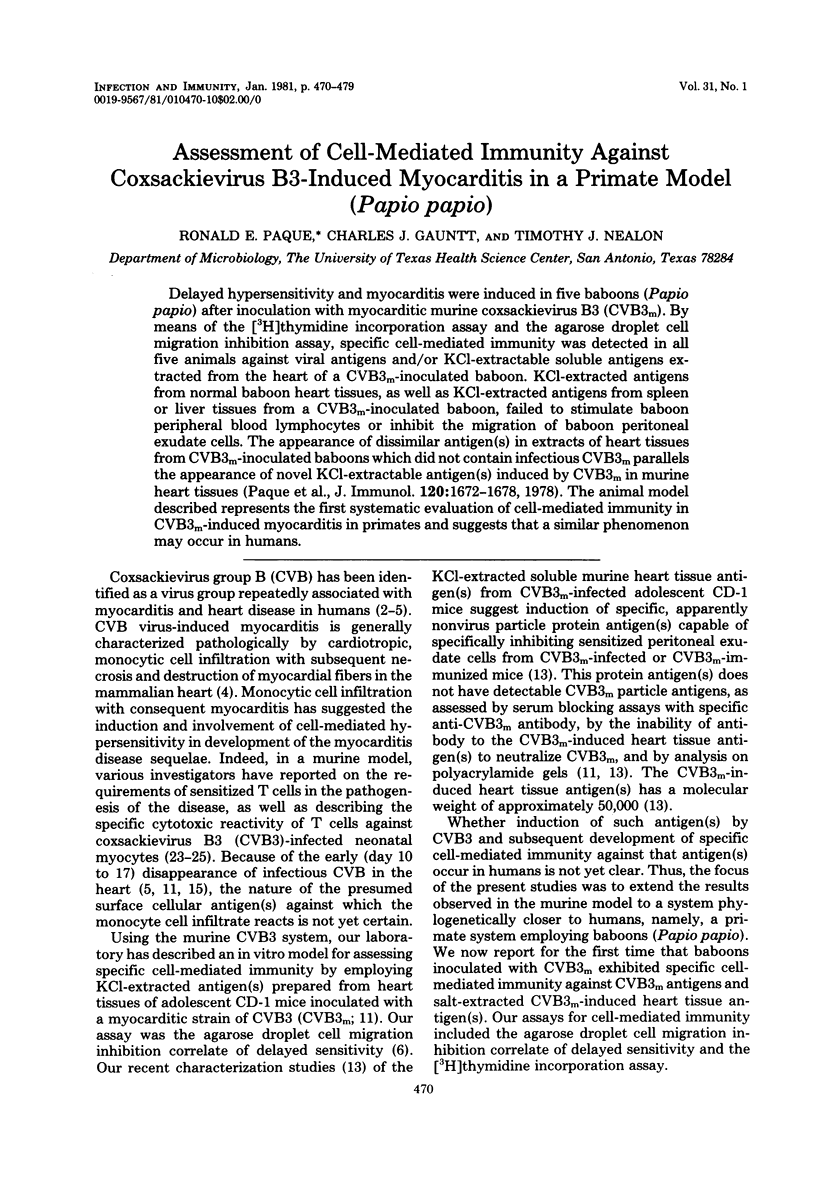
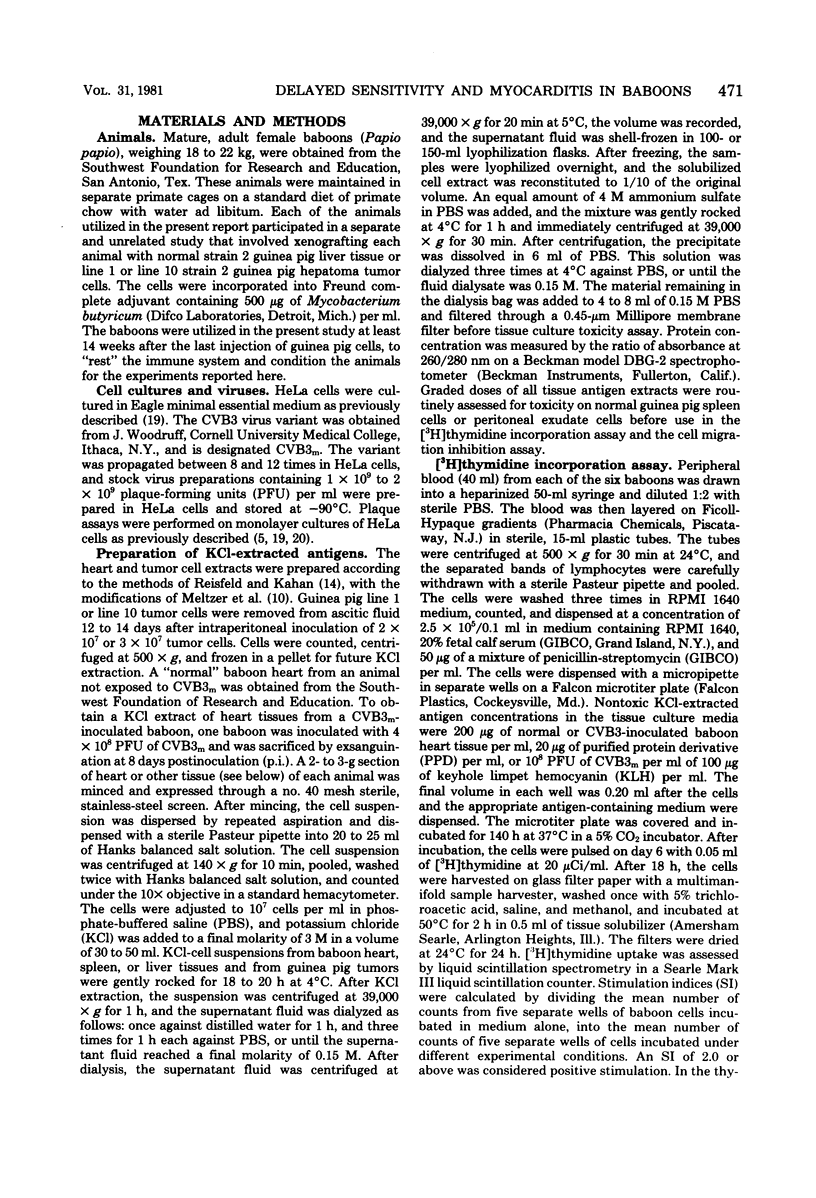
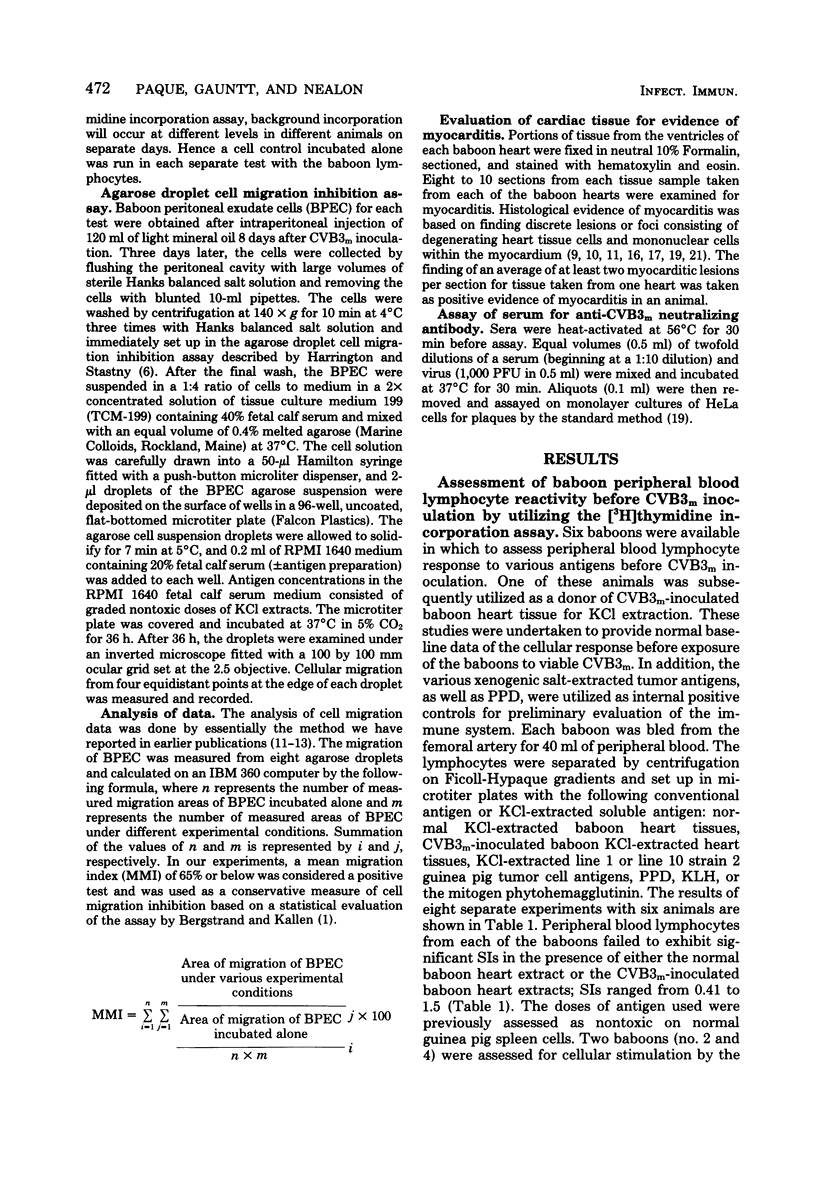
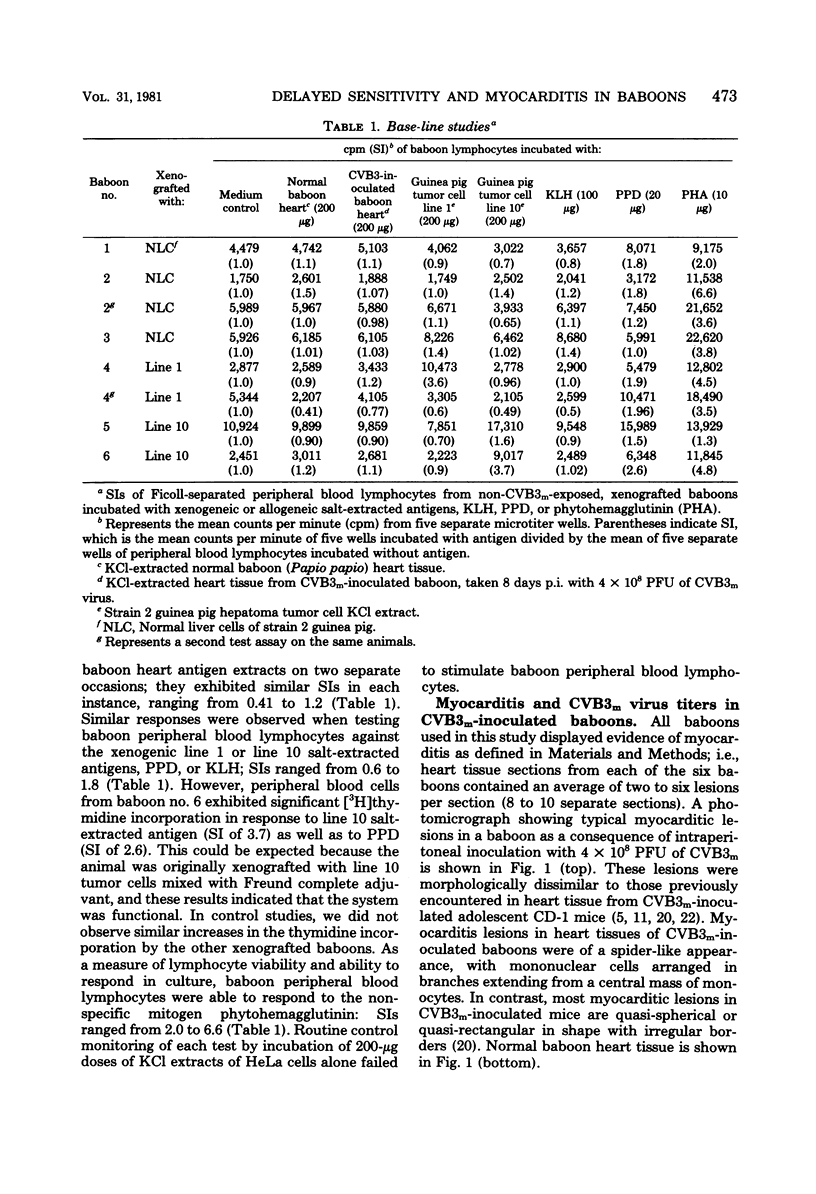
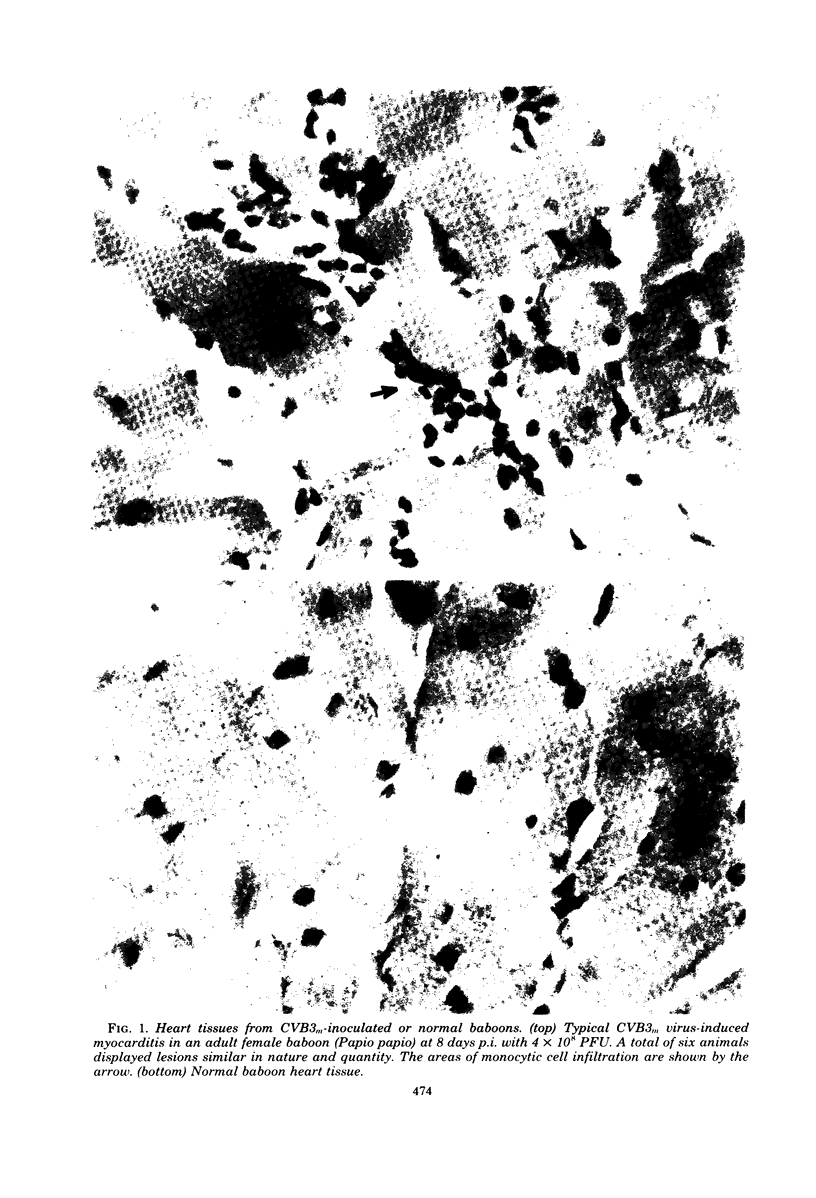
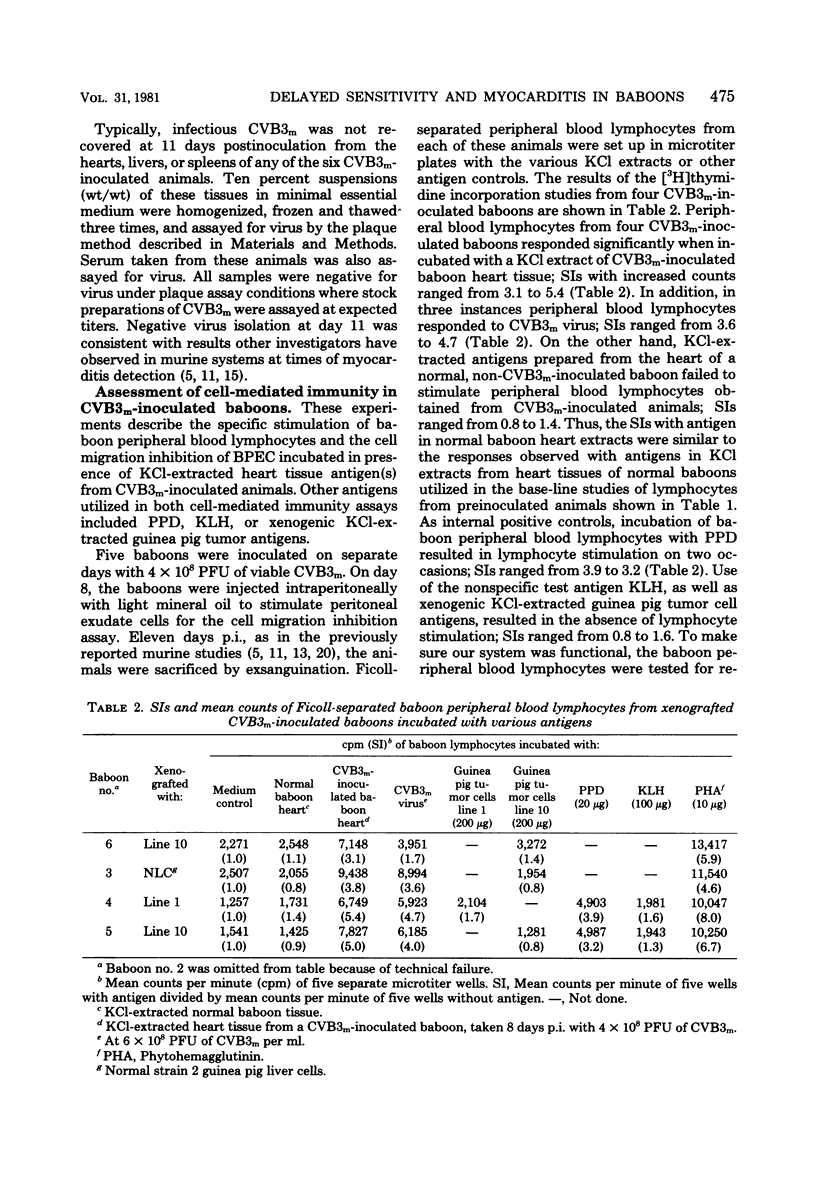
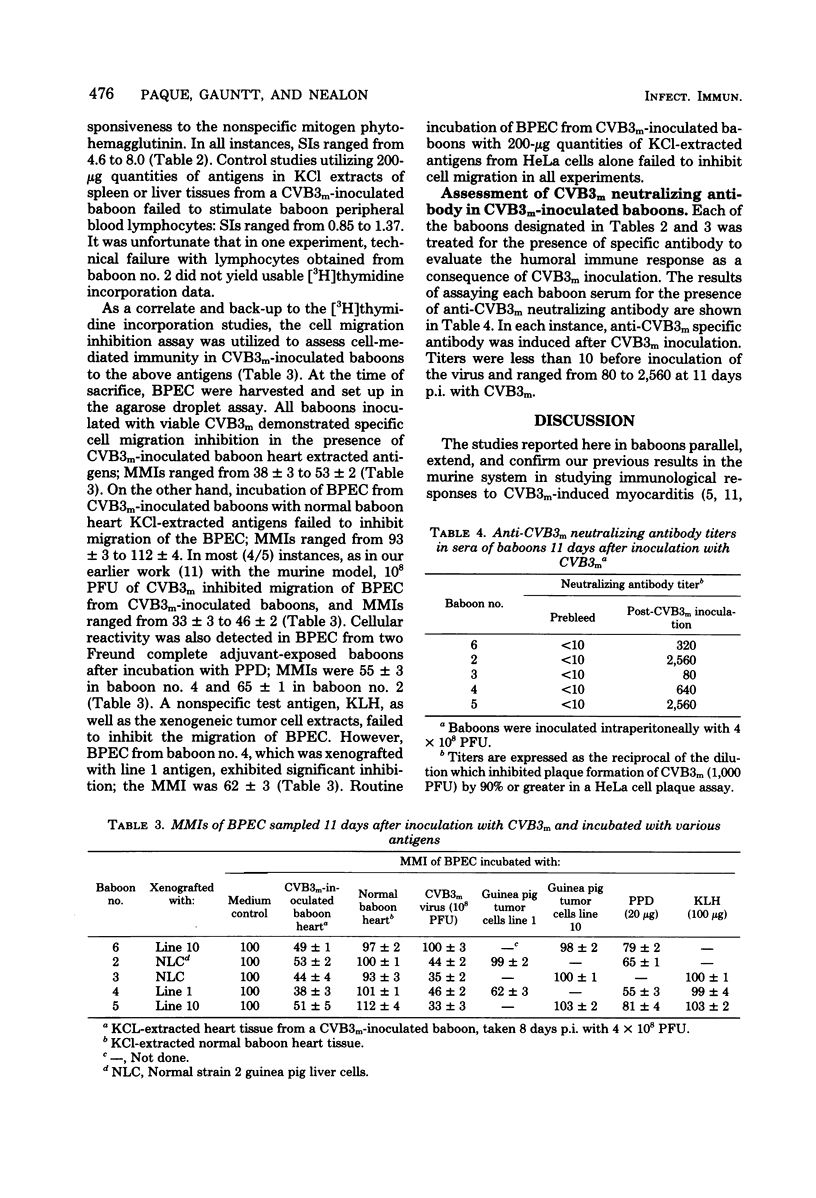
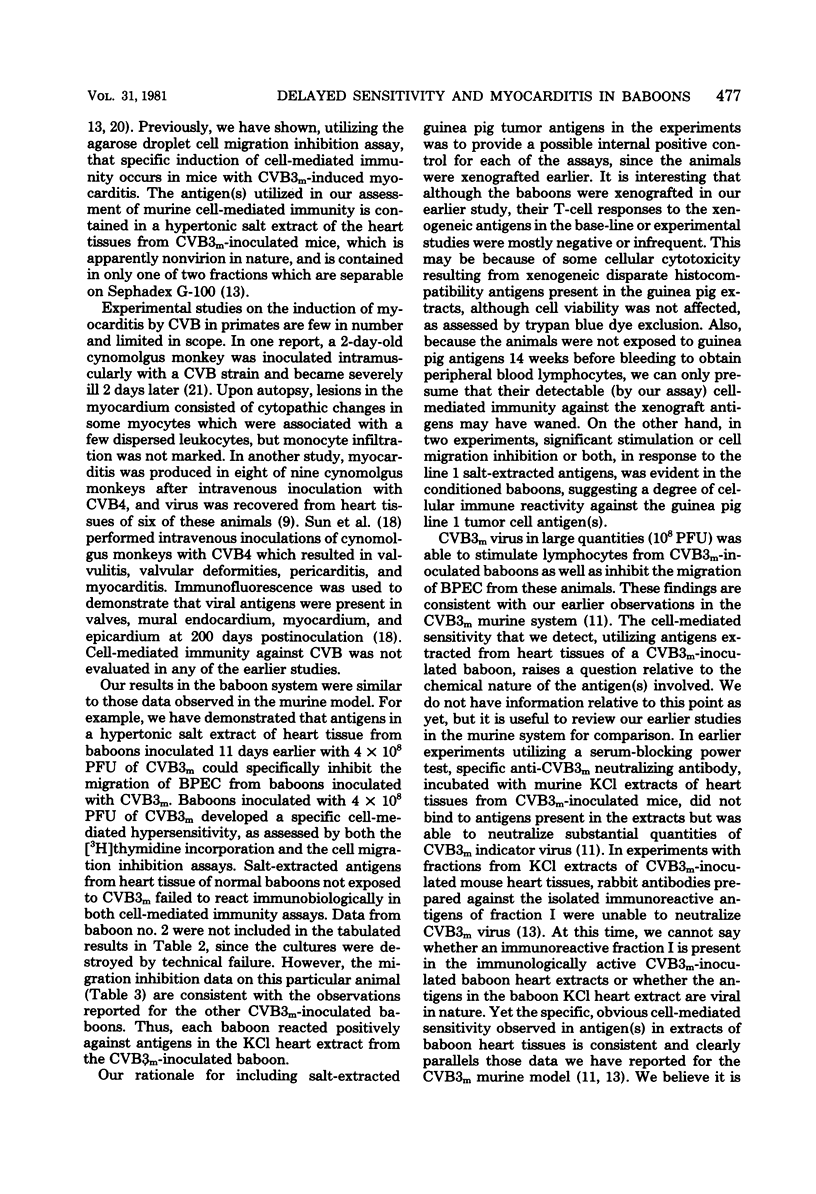
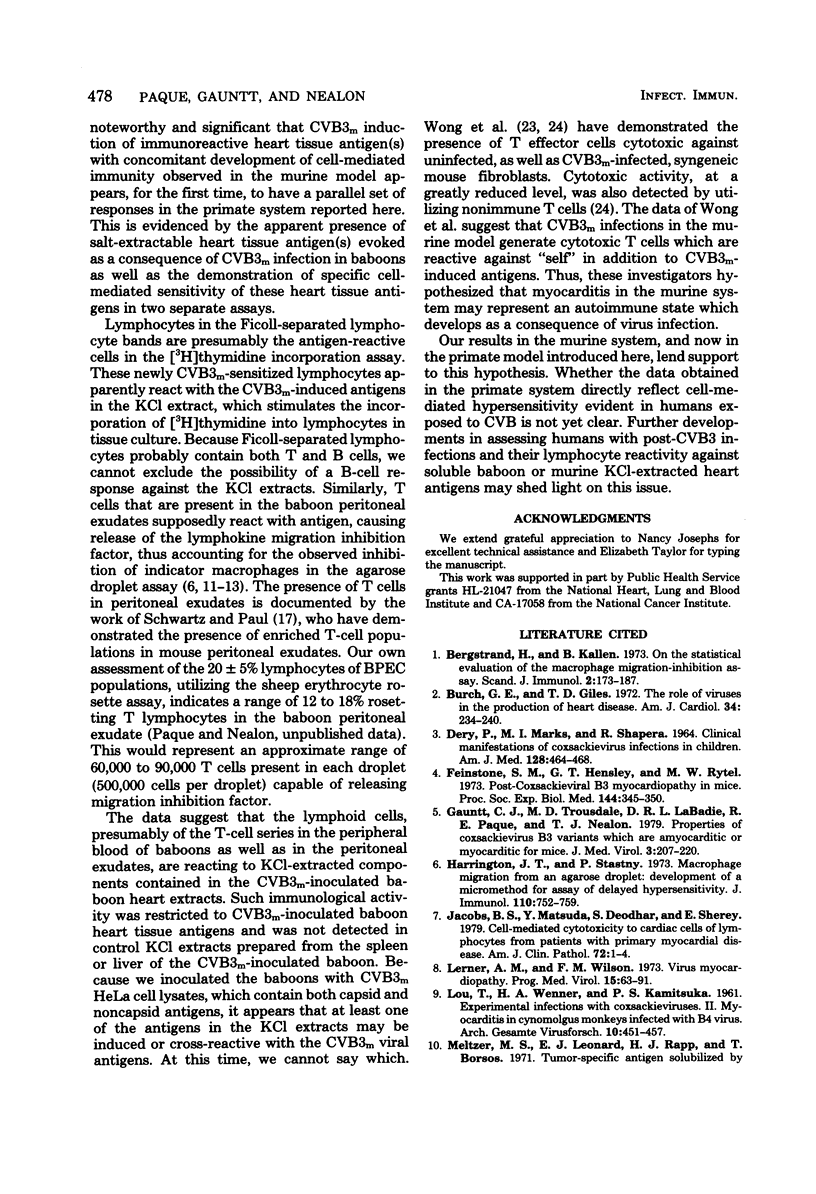
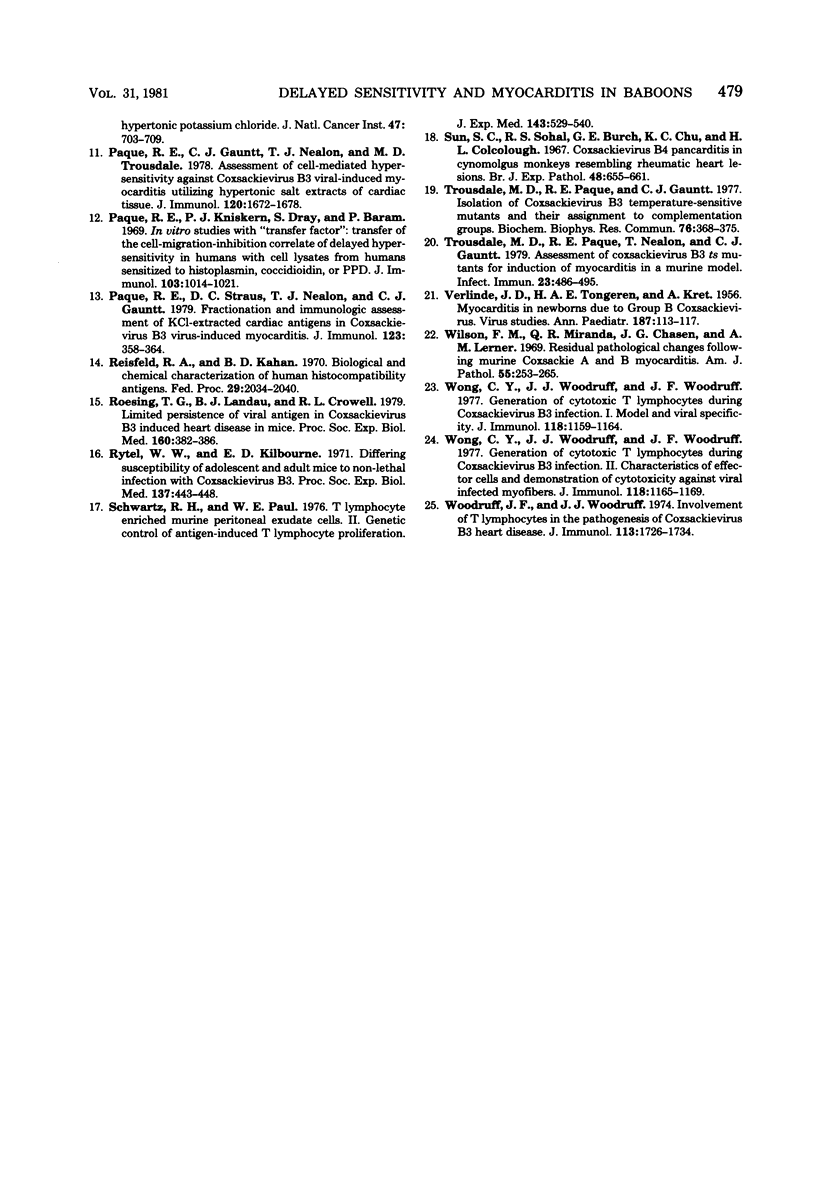
Images in this article
Selected References
These references are in PubMed. This may not be the complete list of references from this article.
- Bergstrand H., Källen B. On the statistical evaluation of the macrophage migration inhibition assay. Scand J Immunol. 1973;2(2):173–187. doi: 10.1111/j.1365-3083.1973.tb02028.x. [DOI] [PubMed] [Google Scholar]
- Burch G. E., Giles T. D. The role of viruses in the production of heart disease. Am J Cardiol. 1972 Feb;29(2):231–240. doi: 10.1016/0002-9149(72)90634-0. [DOI] [PubMed] [Google Scholar]
- Dery P., Marks M. I., Shapera R. Clinical manifestations of coxsackievirus infections in children. Am J Dis Child. 1974 Oct;128(4):464–468. doi: 10.1001/archpedi.1974.02110290034006. [DOI] [PubMed] [Google Scholar]
- Feinstone S. M., Hensley G. T., Rytel M. W. Post-coxsackie virus B3 myocardiopathy in mice. Proc Soc Exp Biol Med. 1973 Oct 1;144(1):345–350. [PubMed] [Google Scholar]
- Gauntt C. J., Trousdale M. D., LaBadie D. R., Paque R. E., Nealon T. Properties of coxsackievirus B3 variants which are amyocarditic or myocarditic for mice. J Med Virol. 1979;3(3):207–220. doi: 10.1002/jmv.1890030307. [DOI] [PubMed] [Google Scholar]
- Harrington J. T., Jr, Stastny P. Macrophage migration from an agarose droplet: development of a micromethod for assay of delayed hypersensitivity. J Immunol. 1973 Mar;110(3):752–759. [PubMed] [Google Scholar]
- Jacobs B., Matsuda Y., Deodhar S., Shirey E. Cell-mediated cytotoxicity to cardiac cells of lymphocytes from patients with primary myocardial disease. Am J Clin Pathol. 1979 Jul;72(1):1–4. doi: 10.1093/ajcp/72.1.1. [DOI] [PubMed] [Google Scholar]
- LOU T. Y., WENNER H. A., KAMITSUKA P. S. Experimental infections with Coxackie viruses. II. Myocarditis in Cynomolgus monkeys infected with B 4 virus. Arch Gesamte Virusforsch. 1961;10:451–464. [PubMed] [Google Scholar]
- Lerner A. M., Wilson F. M. Virus myocardiopathy. Prog Med Virol. 1973;15:63–91. [PubMed] [Google Scholar]
- Meltzer M. S., Leonard E. J., Rapp H. J., Borsos T. Tumor-specific antigen solubilized by hypertonic potassium chloride. J Natl Cancer Inst. 1971 Sep;47(3):703–709. [PubMed] [Google Scholar]
- Paque R. E., Gauntt C. J., Nealon T. J., Trousdale M. D. Assessment of cell-mediated hypersensitivity against coxsackievirus B3 viral-induced myocarditis utilizing hypertonic salt extracts of cardiac tissue. J Immunol. 1978 May;120(5):1672–1678. [PubMed] [Google Scholar]
- Paque R. E., Kniskern P. J., Dray S., Baram P. In vitro studies with "transfer factor": transfer of the cell-migration inhibition correlate of delayed hypersensitivity in humans with cell lysates from humans sensitized to histoplasmin, coccidioidin, or PPD. J Immunol. 1969 Nov;103(5):1014–1021. [PubMed] [Google Scholar]
- Paque R. E., Straus D. C., Nealon T. J., Gauntt C. J. Fractionation and immunologic assessment of KCl-extracted cardiac antigens in coxsackievirus B3 virus-induced myocarditis. J Immunol. 1979 Jul;123(1):358–364. [PubMed] [Google Scholar]
- Reisfeld R. A., Kahan B. D. Biological and chemical characterization of human histocompatibility antigens. Fed Proc. 1970 Nov-Dec;29(6):2034–2040. [PubMed] [Google Scholar]
- Roesing T. G., Landau B. J., Crowell R. L. Limited persistence of viral antigen in coxsackievirus B3 induced heart disease in mice. Proc Soc Exp Biol Med. 1979 Mar;160(3):382–386. doi: 10.3181/00379727-160-40455. [DOI] [PubMed] [Google Scholar]
- Schwartz R. H., Paul W. E. T-lymphocyte-enriched murine peritoneal exudate cells. II. Genetic control of antigen-induced T-lymphocyte proliferation. J Exp Med. 1976 Mar 1;143(3):529–540. doi: 10.1084/jem.143.3.529. [DOI] [PMC free article] [PubMed] [Google Scholar]
- Sun S. C., Sohal R. S., Burch G. E., Chu K. C., Colcolough H. L. Coxsackie virus B4 pancarditis in cynomolgus monkeys resembling rheumatic heart lesions. Br J Exp Pathol. 1967 Dec;48(6):655–661. [PMC free article] [PubMed] [Google Scholar]
- Trousdale M. D., Paque R. E., Gauntt C. J. Isolation of Coxsackievirus B3 temperture-sensitive mutants and their assignment to complementation groups. Biochem Biophys Res Commun. 1976 May 23;76(2):368–375. doi: 10.1016/0006-291x(77)90734-3. [DOI] [PubMed] [Google Scholar]
- Trousdale M. D., Paque R. E., Nealon T., Gauntt C. J. Assessment of coxsackievirus B3 ts mutants for induction of myocarditis in a murine model. Infect Immun. 1979 Feb;23(2):486–495. doi: 10.1128/iai.23.2.486-495.1979. [DOI] [PMC free article] [PubMed] [Google Scholar]
- Wilson F. M., Miranda Q. R., Chason J. L., Lerner A. M. Residual pathologic changes following murine coxsackie A and B myocarditis. Am J Pathol. 1969 May;55(2):253–265. [PMC free article] [PubMed] [Google Scholar]
- Wong C. Y., Woodruff J. J., Woodruff J. F. Generation of cytotoxic T lymphocytes during coxsackievirus B-3 infection. I. Model and viral specificity1. J Immunol. 1977 Apr;118(4):1159–1164. [PubMed] [Google Scholar]
- Wong C. Y., Woodruff J. J., Woodruff J. F. Generation of cytotoxic T lymphocytes during coxsackievirus tb-3 infection. II. Characterization of effector cells and demonstration cytotoxicity against viral-infected myofibers1. J Immunol. 1977 Apr;118(4):1165–1169. [PubMed] [Google Scholar]
- Woodruff J. F., Woodruff J. J. Involvement of T lymphocytes in the pathogenesis of coxsackie virus B3 heart disease. J Immunol. 1974 Dec;113(6):1726–1734. [PubMed] [Google Scholar]



